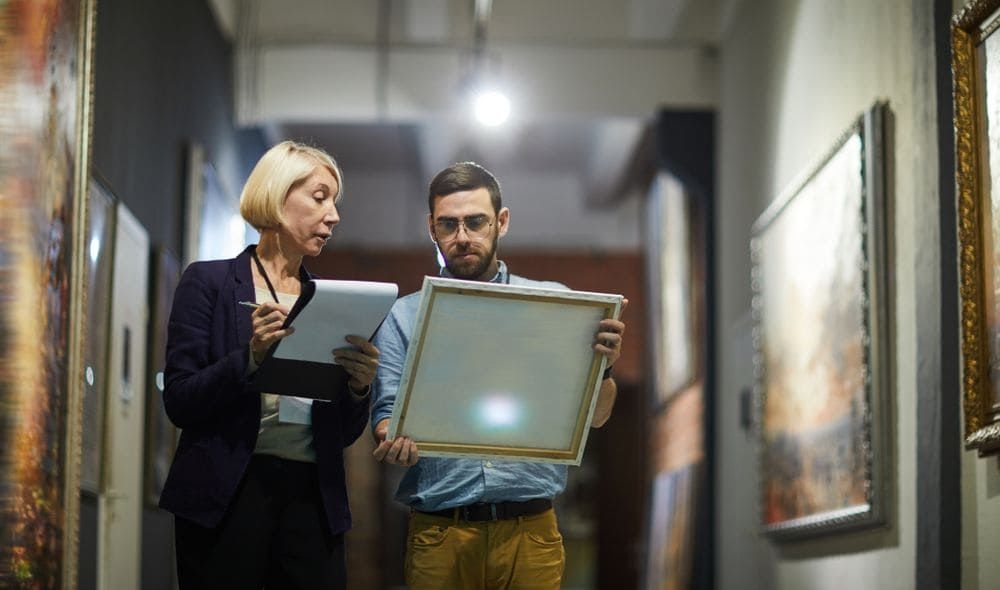Investments in art. How much can you earn from masterpieces?

Works of art, in addition to cultural value, also have material value. Moreover, their value is quite significant, and the “rate” of Van Gogh’s paintings is growing faster than many securities - it is no coincidence that the art market attracts those who know a lot about alternative investments.
Wealthy people keep some of their assets in art collections. We tell you why masterpieces by artists are purchased with no less enthusiasm than luxury goods, and what is especially valued at modern auctions.
Canvases vs securities
Investments in art remain profitable even when the global economy is in difficult times. Thus, according to a report from the Knight Frank agency, in 2022 the art market grew by 29%. Experts predict that the growing trend will continue, and by the end of 2023, art will become the most popular asset among alternative investments: 59% of wealthy people - those who have large capital and belong to the HNWI (High Net Worth Individual) category will make purchases on art market. According to various estimates, the share of high-network products in investment portfolios ranges from 10 to 50%. Moreover, over 10 years, as special indices show, investments in art can bring in up to 91%.
The most expensive art deal in 2022: a portrait of Marilyn Monroe by Andy Warhol Shot Sage Blue Marilyn. The painting was sold at Christie's for $195 million.
And over the past 25 years, according to a Citi report , modernist art has outperformed the S&P 500 by 174%. Thus, during the pandemic, the Impressionism and Modernism Index grew by 41%, while the markets of developed countries added 31.4%. The Artprice 100 Index, which tracks the price of works by the 100 best-selling artists in the world, for the period 2000–2022. averaged an annual return of 9.2%. The S&P 500's performance over the same period was 5.5%.
The benefits of investing in art
In addition to receiving good returns, investing in art is a prestigious and status activity. Collecting opens the way to new acquaintances, helps self-expression and the formation of a legacy - it is nice to pass on to descendants not only business assets, but also cultural masterpieces. For the new generation of millionaires, impact investing is also of particular value: they prefer to support with money something that can make the world a better place, rather than, say, polluting production.
Speaking in economic terms, investing in art is a way to diversify your portfolio. At the same time, art has a low correlation with other asset classes - it is not affected by stock market fluctuations or jumps in prices for oil and other goods.
A successful deal: a collector bought Peter Doig’s painting “The Marsh” at Sotheby’s in 2002 for $55,000, and 13 years later sold it at Christie’s for $26 million.
Why is it risky and what can help reduce the risks?
Alternative investments, which include art, are considered risky. In order to purchase paintings not for the sake of a momentary whim, but for the wise investment of funds and the formation of a valuable collection, you need to be well versed in this area.
Another example of an extremely profitable investment: in 2013, Nicolas de Staël’s painting “Standing Nude” was bought for $6 million at the French auction ArtCurial, and in 2018 it was sold at Christie’s for $12 million.
Several factors may indicate that a piece of art is worth purchasing as an investment. For example, it is good if a painting has been exhibited in a famous museum or in the collections of famous collectors - this is a sign of its value. Portraits of famous people, as well as paintings with interesting stories of creation, are in demand.
Among the names of artists, one can also highlight more “investment-attractive” ones, for example, those who are included in the Artprice100 index, as well as those whose works are stored in famous world museums. Of the genres now, the most “financially promising” are modernism and impressionism. However, even a complete set of these factors is unlikely to help a beginner make the right choice in the market.
The main risks that await non-professionals:
• Chance of running into a fake.
• Buying at an inflated price or choosing an unpromising asset. Yes, the art market has its own “blue chips,” but pricing, and especially forecasting here, is very specific and has many nuances.
• Problems of transportation, proper storage, insurance, etc.
• Legal difficulties.
That is why wealthy investors turn to professionals, private gallery owners and art brokers to form private collections. They help select art objects to suit the customer’s requirements and, if necessary, take into account both the financial component and tax planning.
https://bigmoney.vip/?ref=rains
- Arts
- Business
- Computers
- Oyunlar
- Health
- Home
- Kids and Teens
- Money
- News
- Recreation
- Reference
- Regional
- Science
- Shopping
- Society
- Sports
- Бизнес
- Деньги
- Дом
- Досуг
- Здоровье
- Игры
- Искусство
- Источники информации
- Компьютеры
- Наука
- Новости и СМИ
- Общество
- Покупки
- Спорт
- Страны и регионы
- World


